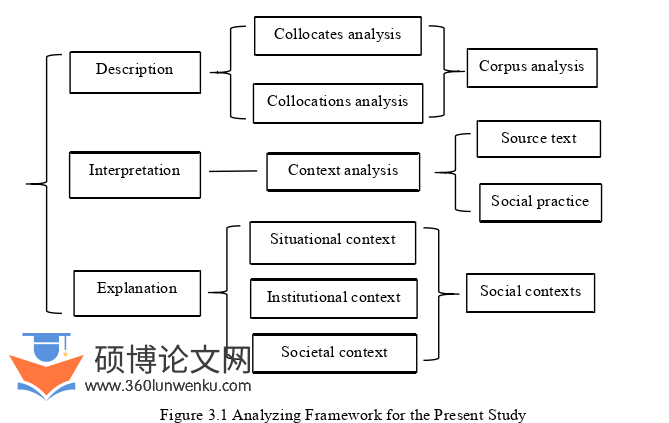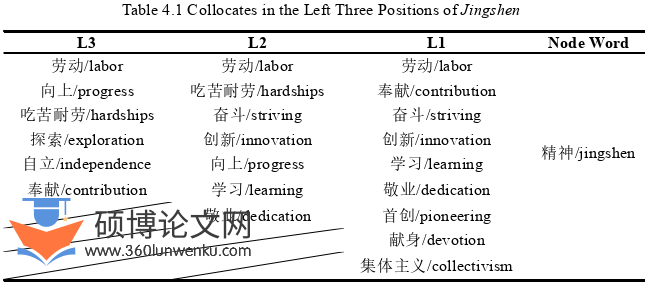本文是一篇语言学论文,本研究将语料库的研究方法与语篇分析相结合,以更好地分析和探索模特儿访谈中景深的语篇结构。然而,它不可避免地有以下局限性,但这些局限性并没有为未来的研究指明方向。
Chapter OneIntroduction
1.1 Research Background
Model workers are elites of the nation, models for the people, and heroes of the Republic,General Secretary Xi Jinping said in his speech at the Commendation Conference for NationalModel Workers and Advanced Workers in 2020. The spirits of model workers, the spirits oflabor, and the spirits of craftsmanship are highly promoted. The topic concerned with modelworkers has attracted much attention of scholars all over the world, as a big sparkle in thefields of biography, sociology, politics, economics, and communication with scarce attentionto linguistics.

语言学论文怎么写
Model workers is a group with glorious history. The Model Worker Movement firstappeared in China during the Agrarian Revolutionary War, and the term model worker wasused for the first time in 1933 to refer to workers who had made outstanding achievements inproduction and construction. In 1950, the National Conference for Representatives of ModelWorkers, Peasants and Soldiers formally confirmed the title of Model Worker and proposedthat “a fixed system should be formed for the selection of model workers” (Yao, 2020). Afterthe founding of new China, there are 16 national commendation conferences held tocommend more than 30,000 national model workers and advanced workers. Since the 1990s,the National Model Worker Commendation Conference is held every five years (see AppendixA).
With rich historical connotations, model worker is a symbol full of emotions, showingthe moral concepts and value orientations in an era (Ai, 2016). Their prominent achievementsand outstanding qualities, especially their spirits embodied in their hard work, have inspiredgenerations of people to contribute to the socialist modernization of China (Wu, 2014). Thespirits of model workers that inherit from the past are endowed with new connotations in thenew historical period (Wang, 2007). Therefore, it is necessary for us to further enrich anddevelop the spirits of model workers, so that they can be persistently inherited and carriedforward (Wang & Zhang, 2010).
............................
1.2 Research Objectives
The main purpose of this study is to figure out the discursive construction of jingshen inmodel worker interviews with the research method of corpus-based discourse analysis. Thefollowing are three research objectives of the present study.
Firstly, this study intends to expand research space of model workers. The currentacademic researches on model workers attach great importance to biography, sociology,politics, economics, and communication, while few of them are from the perspective oflinguistics. Thus, this study will make research on model workers from the view of discourse.
Secondly, this study attempts to serve as a reference for constructing and enriching thediscourse system of model workers. The promotion and practice of the spirits of modelworkers cannot be divorced from the discourse. Therefore, from the perspective of discourseanalysis, the present study could make contributions to better conveying stories of modelworkers.
Thirdly, this study tries to enrich research methods about model workers. The currentresearch methods mainly concentrate upon document researches and case analysis, lack theapplication of empirical methods such as oral history, social investigation and quantitativeanalysis. This study will try to conduct multi-method research on model workers.
To conclude, from the point of linguistics, this study merges discourse study with corpusanalysis to explore the discursive construction of jingshen in the stories of model workers.With the interviews of 80 national model workers, this study is supposed to be relativelyreliable and convincing to excavate the underlying qualities and characteristics of modelworkers.
.............................
Chapter TwoLiterature Review
2.1 Previous Studies on Model Workers
There are plenty of researches directly or indirectly related to model workers whichprovide us with insightful perspectives for reference.
2.1.1 Previous studies at home
Domestic researches on model workers put a large amount of emphasis on biography,sociology, politics, economics, and communication with fruitful achievements, which reflectsthe influences of model workers on politics, society, culture, economy and so forth.
For example, as Yang Dongmei (2019) maintains, the leading role of model workers hasa significant political demonstrative effect on consolidating the foundation of the CommunistParty of China. To a large extent, the selection of model workers is closely related to thedevelopment of society and economy for a certain period of time, which reflects the behaviorpatterns and values advocated by the Central Committee of the Communist Party of Chinaand the People’s Government at that time (You, 1997). Xing Long (2007) narrates the lifehistory of Li Shunda from three historical periods of mutual-aid team, cooperatives and thepeople community in the Chinese revolution, production and construction, during which Libecame a national model worker from a peasant who fled from famine, and reveals the rolesthat Li played in the village and the country. Sun Yun (2013) studies the image, publicity andinfluence of Wu Manyou, and proposes that commending model workers plays a significantrole in the social encouragement, which is conducive to develop work methods for mobilizing the mass. Hu Quanzhu and Lu Xiaocong (2008) adopt the method of oral history to make acase analysis on the identity transformation of Xu Fanghua. They investigate the socialconstruction of collectivist work ethic, and then indicate that the country could make use ofsymbol resources and traditional culture to achieve the purpose of social control and maintainits rule. These experiences and lessons have become valuable assets for the Communist Partyof China to carry out the mass line and country management. Tian Luoyin (2013) focuses onthe national model workers between 1950 and 1980 from the view of political symbol theory,to explore the whole process of shaping model workers as political symbols, including thebackground, confirmation, shaping, promotion and influence, and reveals the operation modeof typical political symbols of model workers.
...............................
2.2 Corpus-based Discourse Study
In traditional linguistics, the term discourse is defined as either “language above thesentence or above the clause” (Stubbs, 1983:1), or “language in use” (Brown & Yule, 1983:1).As a matter of fact, discourse is put into use of research on society and linguistics ininterrelated yet different ways, so the discourse is sometimes considered problematic. Thediscourse can be used to investigate the structure of particular texts and the discourse analysisis sometimes applied to different sorts of language use or topics (Baker, 2006).
The construction of any linguistic theory starts with the investigation of a certain corpus.It would be rather difficult to make a convincing description of language without the analysisof specific data. Ma Bosen (2009) claims that linguistic theories can only be castles in the airwithout the basis of corpus. Therefore, linguistic data is indispensable to the study oflanguage. As the source of empirical data, corpus has been used in many linguistic researches,such as lexicology, morphology, syntax, semantics, pragmatics, sociolinguistics, stylistics andso on, serving as the “default resources” for linguists (Teubert, 2005:1). Hardt-Mautner (1995)is the first scholar who advocates the use of corpus technology to conduct discourse analysis.She believes that corpus serves as a strong foundation for quantitative analysis and thefunctions of concordance effectively break the boundary between quantitative and qualitativeresearches. Corpus techniques enable researchers to analyze language data and clarifylanguage patterns in a variety of ways. To be more precise, researches can identify the implicitmeanings of discourse through the observation of its frequency, keywords, collocation,clusters and patterns assisted with the corpus analysis software.
..............................
Chapter Three Research Methodology.............................. 13
3.1 Theoretical Framework.......................................13
3.1.1 Fairclough’s three-dimensional framework.................................. 13
3.1.2 Analyzing framework for the present study................................14
Chapter Four Analysis and Discussion..................................20
4.1 Corpus Analysis..................................................... 20
4.1.1 Collocates of jingshen..............................20
4.1.2 Context of the collocations............................... 23
Chapter Five Conclusion.............................46
5.1 Major Findings..........................................46
5.2 Limitations and Suggestions.................................47
Chapter FourAnalysis and Discussion
4.1 Corpus Analysis
In this sector, collocates of jingshen are sorted with the assistance of WordSmith Tool 6.0,followed by the context analysis of the collocations.
4.1.1 Collocates of jingshen
After making the word list of the interview files of 80 model workers with WordList anddoing the concordance on jingshen with Concord, the goal of exploring the discursivecharacteristics of jingshen is primarily achieved by observing its lexical patterns inconcordance. Therefore, collocates in its left three positions (L1, L2, L3) are computed byConcord and are represented in Table 4.1.

语言学论文参考
The “friends” words that typically hang out with the node word jingshen are reveled inTable 4.1, organized in terms of frequency within each column. The top word in each columnis the word most frequently found in that position (Scott, 2015). The second word is thesecond most frequent and the rest is in the same manner.
............................
Chapter FiveConclusion
5.1 Major Findings
Guided by Fairclough’s three-dimensional framework, both quantitative and qualitativeanalysis are conducted in this study to figure out the discursive construction of jingshen. To bespecific, the method of corpus analysis is used to observe the discursive characteristics ofjingshen, and that of discourse analysis is to explore the interactions between discourses andsociety, thus investigating the characteristics of model workers in their stories and how thediscourses affect the values of the time. Based on the Corpus of Model Worker Interviews,eighteen pieces of examples are extracted and analyzed in Chapter Four, where the researchprocedures are detailed according to the three dimensions of discourse analysis. Majorfindings of this study are outlined as follows.
Firstly, the process of model workers telling their stories is that of they constructingthemselves. Considering that the collocates of jingshen are classified into the groups ofaggressiveness, perseverance, responsibility and inheritance based on textual analysis, thediscursive construction of jingshen is around the discourse of aggressiveness, the discourse ofperseverance, the discourse of responsibility, and the discourse of inheritance, which impliesthe reasons why model workers could make extraordinary achievements in ordinary positions.
Secondly, the process of model workers constructing themselves incarnates theirdistinguished qualities. The discourse of aggressiveness indicates that national model workerswork hard to make good showings and prove themselves, so they are committed to their jobsand attain the sense of accomplishments. Moreover, the discourse of perseverance suggeststhat model workers keep their original aspirations over decades with an intention to make great achievements in their positions. Besides, the discourse of responsibility presents thatmodel workers are always ready to help and serve the people with the sense of socialresponsibility. Last but not least, the discourse of inheritance implies that model workers havea tendency to place high expectations on younger generations and hope that their growth anddevelopment can make a significant difference to the future of the country.
reference(omitted)
